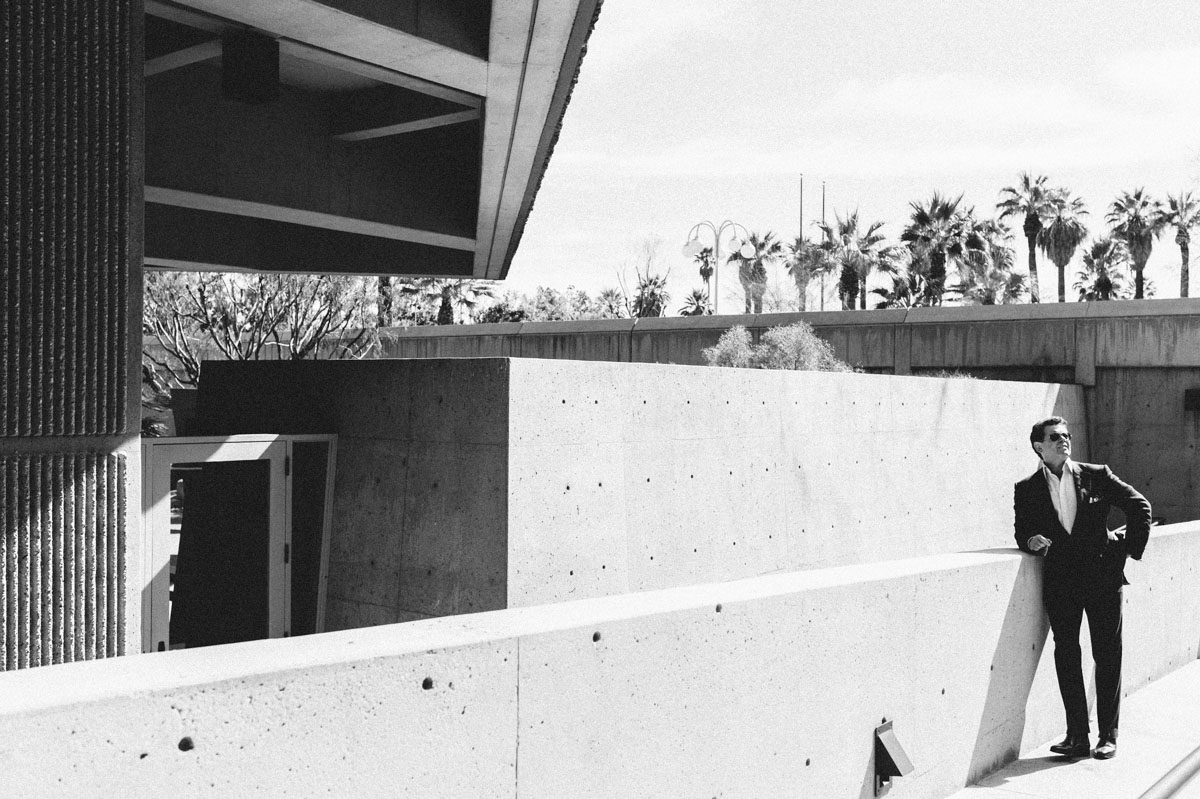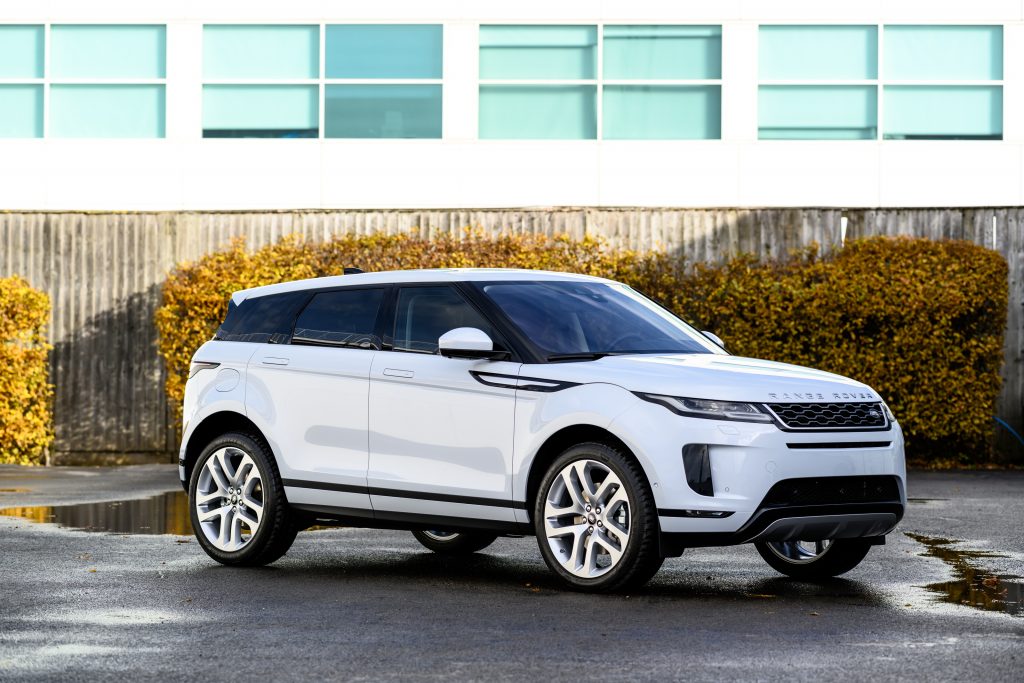Interview: Gerry McGovern on Modernizing a Brutalist Design
Land Rover’s Design Director and Chief Creative Officer talks to us about bringing sexy back to the Discovery

By Michael Frank
When you start a conversation with Gerry McGovern, Design Director and Chief Creative Officer for Land Rover, you never quite know where it’s going to end up. The occasion was the Paris Motor Show, where Land Rover has just debuted its newest, possibly most important vehicle in the past half decade, the new Land Rover Discovery. It goes on sale mid-next spring for $49,990, and as such, is one of the more obtainable SUVs in the Land Rover pantheon.

Naturally that’s not where the conversation started, because McGovern is an outsized personality, even among car designers. Also, because we wanted to know more about something else that was debuting, the Zenith El Primero Range Rover, a new watch—price and release date still TBD—made in collaboration with the Swiss timepiece maker. The El Primero debuted in 1969, the same year as the Range Rover, and was one of the first timepieces with an automatic chronographic movement. Its 36,000 vibrations per hour make it one of the most accurate self-winding watches still, and we asked McGovern whether that was the attraction to Zenith—but we named the brand like the extinct television maker and that got McGovern going.
“I love how you say ZEE-nith. Alu-minium; you say ‘a-lew-minum.’ Bonnet. What do you say, hood? Boot; trunk…” McGovern jests his way through this exercise, in part as a bit of subtext for branding. The distinction in American vs. British lingo is important to him not merely because it’s amusing, but because Land Rover has flourished in the U.S. in part by trading on its English-ness.

So why muddy the picture by partnering with Zenith, a Swiss label?
We didn’t want to just go to any luxury brand and say, ‘Right, let’s stick our name on one of your watches.’ We wanted it to be more meaningful. I wanted it to be a proper venture. Zenith is both peerless and understated. That’s Range Rover. And yet in the watch world they have a very good reputation for what they’ve done; they were the movement in Rolex for years. And of course Zenith customers are already Range Rover customers. [McGovern points out that their timepieces stretch from five to well into six figures.] This is a starting point, mind you. What’s interesting is how they’ve evolved the watch. I come to it from a visual perspective, and just like you wouldn’t scrap Discovery or Range Rover and start with all new proportions, you respect what you have, in this case El Primero is still very modern but classic, and then evolve the design. So we have the ceramicized aluminum case, emphasizing that Range Rover has this aluminum structure, use of leather from the Range Rover seat. We changed very minute details, so it has a very reductive face, which is the same approach we use on Range Rover interiors, so you emphasize strengths by paring back.

How does this thinking figure into Discovery, especially since you’ve had to add about a half-foot of length and you targeted ‘real-world’ seating for seven people, and not just kids in the third row?
Well previous Discovery had been around for 12 years and had really become out of step with the rest of the brand. It was very polarizing, people forget that. People called it ‘brutalistic,’ which is a kind of architecture from the 1950s I quite like. Anyway, Discovery had more in common with old Defender. People want something more refined, something more in the direction of Range Rover and less overtly rugged. When there’s a new family of Defender it can go that way, but customers have been asking for Discoveries to be more premium. Discovery is about being incredibly versatile. It’s a family vehicle.

What about the tricks you had to do visually to make a longer Discovery keep proper proportions, so it doesn’t look too muscular, too hulking?
It’s like a Saville Row suit, really. It still emphasizes shape, powerful chest, but then in at the waist. Here we do both, it’s got a faster windscreen, it’s more dramatic at its waistline, and it’s more aerodynamic, so it hasn’t got that constructivist wheel arch treatment that would make this car look too square. We kept touches of Discovery in it with the stepped roof and stadium seating [both rows of seats behind the driver climb higher so there’s a forward view of the road]. We slim the body with a visual break partway down the door because it stops the eye between the prominent shoulder and then cutting in at the waist. [Here McGovern draws a contrast to the suits Donald Trump wears which, politics aside, he says are totally shapeless.]

McGovern also dispensed with the outgoing Discovery’s split rear hatch, where the bottom folded down like a pickup-truck tailgate, and the top swung open like a hatchback.
I know a lot of traditional Discovery customers are going to be angry with me, saying, ‘God that McGovern, it’s too modern, it’s not square enough.’ Well get over it. Going for a single piece gives you much better quality fit and finish, you can’t have that redundant mechanism to open the top one and the bottom one, because that requires reinforcing, so this way you actually get a much larger opening [and there’s now an interior, retractable tailgate of a sort that can easily hold the weight of two people, so tailgating is still possible]. At first we didn’t want to do that inner tailgate and we had this debate and I said, ‘We’ve got to do it because the customer is god, they want this utility.’

McGovern explains that part of the genius of the new car is in growing in length, but by switching to Range Rover’s Premium Lightweight aluminum architecture (unibody vs. body-on-frame), drops nearly 1,000 pounds. Still he says the designers at the brand worked directly with engineers from the beginning because part of the challenge with an aluminum body structure is that it can’t be cut the same way as steel.
You can’t get the same level of precision in aluminum as you can in steel because of the way you press it. You have to give them more run off, more curvature, to retain strength, and in terms of openings [doors, hatch], you’ve got to have larger radii, you can’t cut as sharply. But ultimately design is always about working within the material, not forcing it, whether you a sculpture or any sort of artist.

If you’re pulling back to ultimate goals with Discovery, what was the chief target?
Sexy. I wanted to see it become more desirable, more sexy. Why can’t a family vehicle be sexy, glamorous? Why not? Ever since Evoque we’ve added more than “capability” to the brand, we’ve added desirability, and ultimately that’s what we all want, to be attractive, to be surrounded by beauty and that’s why I’m so excited about what we’ve done with Discovery.
Lead image by Michael Frank, portrait by Josh Rubin, all other images courtesy of Land Rover












